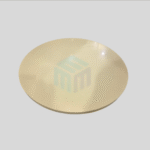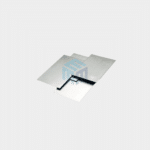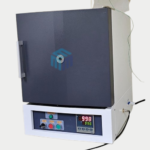Molybdenum disilicide (MoSi2) heating elements are widely used in high-temperature industrial furnaces and have specific advantages and applications. Here are the key applications and advantages of Molybdenum Disilicide heating elements in furnaces:
Applications:
- High-Temperature Furnaces: MoSi2 heating elements are extensively used in high-temperature industrial furnaces, including those for heat treatment, sintering, annealing, and ceramics firing, where temperatures can range from 1,200°C to 1,800°C (2,192°F to 3,272°F).
- Heat Treatment of Metals: These heating elements are used in the heat treatment of various metals, including steel and alloys, to improve their mechanical properties, such as hardness and strength.
- Ceramics and Glass Manufacturing: MoSi2 heating elements are applied in the production of ceramics and glass, ensuring uniform and precise heating during the firing and annealing processes.
- Semiconductor Processing: In semiconductor manufacturing, MoSi2 heating elements are used for high-temperature processes such as oxidation, annealing, and diffusion of silicon wafers.
- Research and Laboratory Furnaces: They are employed in laboratory and research furnaces for experiments and material testing that require high-temperature and precise temperature control.
Advantages:
- High-Temperature Capability: MoSi2 heating elements can operate at extremely high temperatures, making them suitable for applications where heating to very high levels is required.
- Rapid Heating and Cooling: They offer excellent thermal responsiveness, allowing for quick heating and cooling cycles, which can enhance process efficiency.
- Long Service Life: MoSi2 heating elements have a long operational lifespan, resulting in less frequent replacements and reduced downtime.
- Uniform Heating: These elements provide even and consistent heat distribution, ensuring materials are heated uniformly and preventing hot spots within the furnace.
- High Radiant Efficiency: MoSi2 heating elements emit radiant heat, which is energy-efficient and can provide direct and rapid heating to materials.
- Low Thermal Mass: MoSi2 elements have a low thermal mass, which allows for precise and efficient temperature control, reducing overshooting and undershooting of set temperatures.
- Resistance to Oxidation: MoSi2 heating elements form a protective layer of silicon dioxide (SiO2) upon oxidation, which protects the underlying material from further degradation. This self-healing property is particularly advantageous.
- Chemical Inertness: They are chemically inert and can operate in various atmospheres, including reducing, oxidizing, and inert gases.
- Low Maintenance: MoSi2 heating elements require minimal maintenance, which reduces operating costs and minimizes downtime.
- Compatibility with Different Atmospheres: They can operate in a range of atmospheres, including air, nitrogen, argon, and vacuum, making them versatile for various applications.
- Good Mechanical Strength: MoSi2 heating elements have good mechanical strength and can withstand mechanical shocks and vibrations.
In summary, Molybdenum Disilicide heating elements are crucial components in high-temperature industrial and laboratory furnaces. Their exceptional temperature resistance, longevity, uniform heating, chemical inertness, and low thermal mass make them well-suited for a wide range of applications in various industries where precise and high-temperature heating is required. We are a USA company catering products and solutions in the USA, Australia, New Zealand, Singapore, Malaysia, India, South Korea and Vietnam.







